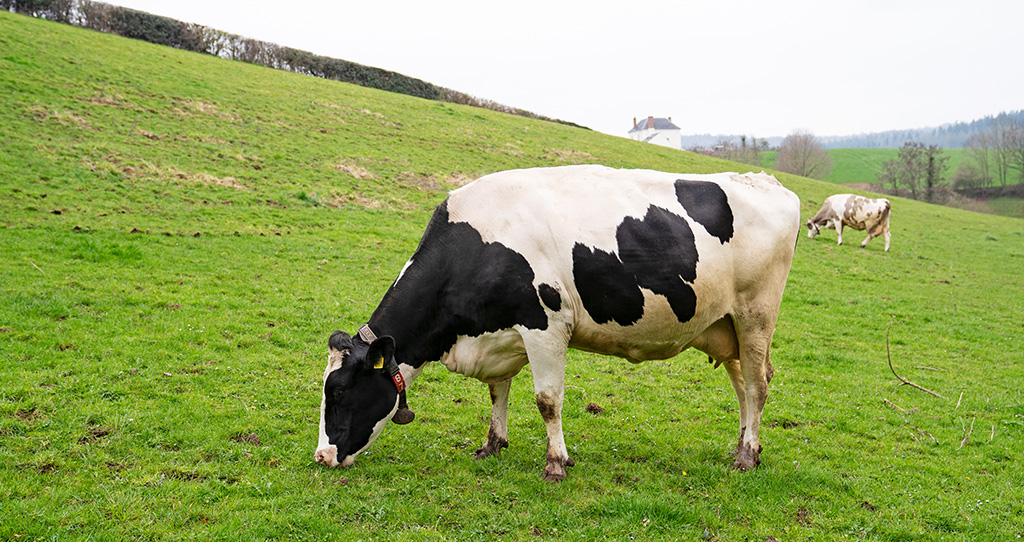The science and evidence around bTB

Bovine tuberculosis, also known as bTB, is a devastating, contagious disease. Find out how it is spread and the current situation in England and Wales.
This zoonotic disease affects cattle and other animals such as badgers, deer, goats and, in some rare cases cats and dogs.
It’s one of the biggest challenges facing the cattle farming industry, especially in some regions of England, such as the South West and West Midlands.
How it spreads
Bovine tuberculosis can spread through direct and indirect contact from badgers to cattle, and cattle to badgers, including through saliva, urine, and faeces. The primary route is via cattle inhaling infected particles in the air and eating or drinking from contaminated material.
Clinical sampling of live badgers has shown that bTB bacteria can be isolated from sputum, faeces, urine, bite wounds and draining abscesses. Badger latrine sites, where badgers urinate or defecate in fields to mark their territory, can contaminate grass with bacteria, which can then be transmitted to the cows when they graze.
If a badger has TB infection in its kidneys it will excrete extremely high levels of TB bacteria on to the grass. If an infected badger eats or drinks from cattle feed or water troughs, they can spread TB bacteria through their saliva, which infects the cows when they eat or drink from these contaminated sources.
Infected badgers can also spread the bacteria through open cuts and wounds.
There is also the potential for direct transmission of bacteria through nose-to-nose contact between badgers and cattle.
This can occur when badgers visit farmyards and there is substantial evidence to show close contact in farm buildings as well as regular visits from badgers to cattle feed stores.
The disease can also be spread from:
- Infected cows to their offspring during suckling and, much more rarely, in the womb.
- Through contaminated equipment, animal waste, feed and pasture.
The multiple methods of transmission between badgers and cattle, are also discussed in the bTB Transmission scientific review paper.
What does the research say?
The link between badger and cattle infection was first suspected in the 1970s and was proven in 1997 by Professor Sir John Krebs.
In addition, both the Zuckerman and Dunnet reports to the government concluded that the badger is the most important wildlife reservoir, and it is involved in the maintenance and transmission of the disease to cattle.
Transmission occurs by breathing in the M. bovis bacteria that cause bTB. Bacteria released into the air through coughing and sneezing can spread the disease to uninfected animals. This usually happens when animals are in close contact with each other, so animal density is a major factor in the transmission of M. bovis.
Research analysis of genetic data from the bacteria that causes bTB also found that cattle are approximately ten times more likely to catch TB from badgers than badgers are to catch it from cattle. Disease transmission within badger and cattle populations occurs twice as frequently as transmission between the species.
Read more at: The University of Edinburgh | Genetic clues of TB spread between cows and badgers revealed.
The programme of trials that followed the Krebs report were designed to identify the most effective strategy for preventing bTB in badgers spreading into cattle populations.
For example, Northumberland has had pockets of bTB caused by cattle movements, but the outbreak has been stamped out and there is no evidence of any wildlife reservoir of the disease in this area.
Research by the APHA (Animal Plant Health Agency ) assessed the risk of bTB spread from slurry levels of TB in faeces was very low. Good management practices include precautionary measures to mitigate possible risk.
Cattle movements can potentially introduce the bacterium to bTB free areas, but scientific evidence says that if wildlife is free of disease and appropriate control methods are used, this is not a long-term issue.
The current situation in England
The national bTB incidence rates are significantly decreasing; the area considered ‘endemically’ infected in England shrank by 1,172.72 km2 between 2020 and 2021.
However regional bTB trends vary greatly within and between the three distinct risk areas in England; HRA (high Risk Area), EA (Edge Area) and LRA (Low Risk Area).
There has also been a 41.5% decrease in new bTB incidents in the high-risk area following the introduction of the 25-year TB Eradication Strategy in England.

The key measure for herd incidence is the rate of new incidents per 100 herd years at risk, indicating the total time TB Free herds are susceptible to infection since their last breakdown or negative test.
In the HRA as of June 2023, the rate was 13.4. This means that, on average, 134 new breakdowns were detected by the APHA for every 1,000 herds under bTB surveillance during that period.
The government monitors and reports on disease trends quarterly. Over time, efforts to combat bTB have led to a decrease in rates and fewer cattle being affected however levels of TB remain significantly higher than pre foot and mouth disease.
The current situation in Wales
When it comes to bTB in Wales, the long-term trends indicate improvement overall. However, as in England, there is substantial regional variation with areas of emerging or endemic disease across TB Risk Areas.
Between 2009 and December 2022, new TB incidents fell by 49% in Welsh herds, and the prevalence decreased by 32%. By the end of December 2022, 94.7% of herds were TB free.